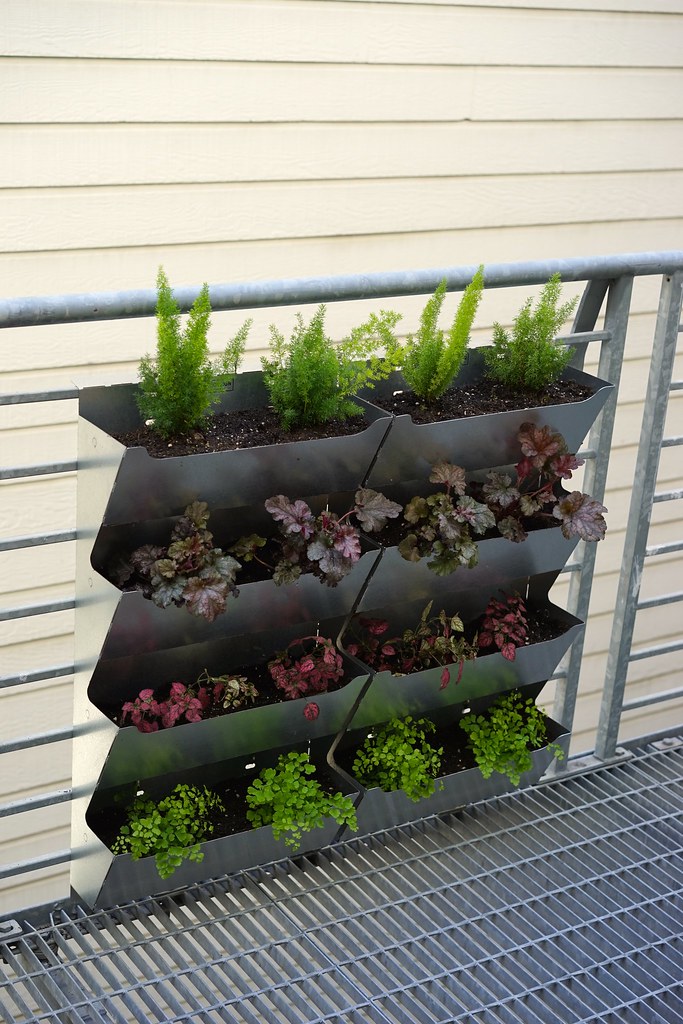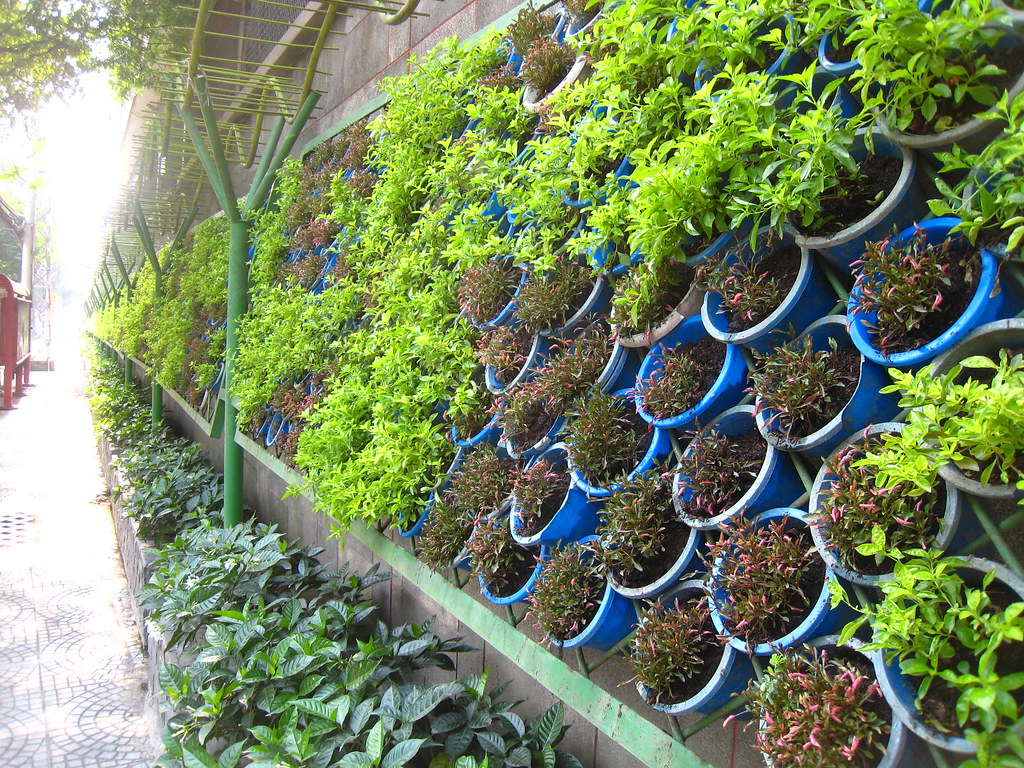Contents

“Shift Design Planter 006 | Custom …” from www.flickr.com
Key Takeaways
-
Vertical garden wall planters are a fantastic way to grow plants in limited spaces.
-
Selecting the right plants is crucial for a thriving vertical garden.
-
Building your own DIY vertical garden can be a fun and rewarding project.
-
Maintenance is key to ensuring the longevity and beauty of your garden.
-
Vertical gardens can also be a source of stress relief and air purification.
Imagine a lush, green oasis cascading down your wall, a serene garden that takes up no floor space yet fills your room with life. Vertical garden wall planters are not just a trend; they’re a creative solution to gardening in small spaces and a way to bring the tranquility of nature into your home. Let’s embark on this journey together to craft a peaceful garden that doubles as a natural stress reliever.
Why Vertical Garden Wall Planters?
Small Space, Big Impact
Most importantly, vertical gardens are perfect for urban dwellers with limited space. They allow you to maximize vertical real estate, bringing as much greenery into your home as your walls will permit. Besides that, they are also incredibly versatile, fitting into any corner or even hanging on a balcony railing.
The Science of Plants and Stress Relief
It’s not just about aesthetics; there’s a therapeutic side to this as well. Studies have shown that plants can help reduce stress and improve air quality. Therefore, incorporating a vertical garden into your living space is not just a design choice, it’s a health-conscious decision as well.
Getting Started with Your DIY Hanging Planter

Tools and Materials You’ll Need
Before diving into the project, let’s ensure you have everything you need. Here’s a basic list to get you started:
-
Durable containers or planters
-
Mounting brackets or a sturdy frame
-
High-quality potting mix
-
A drill for wall installations
-
Watering can or a drip irrigation system
Choose containers that match your decor but also keep in mind the needs of the plants. For example, terracotta pots are porous and allow for air and water to move through them, which is great for many plants. However, they can dry out quickly, so if you’re not one for frequent watering, you might opt for plastic or glazed containers instead.
Choosing the Right Plants for Your Space
When selecting plants, consider the light conditions in your space. Is your wall in full sun, partial shade, or is it a low-light area? This will determine which plants will thrive in your vertical garden. Here are a few suggestions:
-
For sunny spots, succulents and herbs like rosemary and thyme are great choices.
-
In shadier areas, ferns and ivy can create a lush green backdrop.
-
For edible options, consider lettuce, strawberries, or cherry tomatoes.
Remember, the goal is to create a peaceful garden, so choose plants that make you feel serene and happy.
Creating Your Vertical Garden Wall

Step 1: Constructing the Frame
First things first, you’ll need a strong frame to hold your planters. This can be as simple as a wooden pallet or as elaborate as a custom metal frame. Make sure it’s secure; you don’t want your peaceful garden to come crashing down!
Here’s a quick guide to building a simple wooden frame:
-
Cut four pieces of wood to create a rectangular frame.
-
Use screws or nails to join the corners firmly.
-
Add horizontal slats where you’ll attach the planters.
Paint or treat the wood to withstand moisture from watering the plants. You can personalize it with colors or patterns that complement your space.
Step 2: Preparing Pots and Planters
Once your frame is ready, it’s time to prepare your pots. If they don’t already have drainage holes, drill some at the bottom. Proper drainage is essential to prevent root rot and keep your plants healthy.
Next, attach your planters to the frame. If you’re using individual pots, secure them with mounting brackets. For larger planters, you might need additional support, so make sure they’re fastened securely to your frame.
Step 3: Planting and Mounting Your Garden
Now, the fun part – planting! Fill your pots with potting mix and plant your selections with care. Be gentle with the roots and make sure each plant has enough space to grow.
Once your plants are settled in their new homes, mount the frame onto your wall. Ensure it’s level and firmly attached. If you’re not confident with tools, don’t hesitate to ask for help or hire a professional.
And there you have it, your very own DIY vertical garden wall planter. With a bit of effort, you’ve created a peaceful, green retreat that’s sure to be a conversation starter.
Remember, this is just the beginning. There’s more to explore in the world of vertical gardening, from maintenance to expansion. But for now, take a moment to enjoy the serenity of your new space.
Customizing Your Hanging Planters

Now that your vertical garden is in place, it’s time to add a personal touch. Customizing your planters can make your space truly your own and further enhance the tranquility of your garden.
Personalizing with Paint and Decorations
Let’s start with paint. Choosing the right color can affect the mood of your space. Soft, pastel colors can create a calming effect, while vibrant colors can make your vertical garden pop. Use non-toxic, water-resistant paint to ensure the safety of your plants and their longevity against the elements.
Beyond paint, consider adding decorations like fairy lights for a magical evening glow, or wind chimes for a gentle, soothing sound. Remember, the goal is to create a peaceful atmosphere, so choose decorations that bring you joy and serenity.
Incorporating Functional Herbs and Edibles
One of the joys of vertical gardening is the ability to grow your own herbs and edibles. Imagine plucking fresh basil or mint right from your wall while cooking. It’s not only convenient but also a step towards sustainable living.
When incorporating edibles, consider these tips:
-
Place herbs and edibles within easy reach for harvesting.
-
Group plants with similar water and light needs together.
-
Use quality organic potting soil to ensure healthy growth.
Edibles not only provide fresh produce but also add a variety of textures and colors to your garden, making it a feast for the eyes as well as the palate.
Maintaining Your Vertical Garden

“vertical planter wall – it stretched …” from www.flickr.com and used with no modifications.
For your vertical garden to continue being a source of peace and beauty, regular maintenance is key. Here’s how to keep your plants thriving:
Watering and Feeding Your Plants
Watering your vertical garden might seem tricky, but with a simple drip irrigation system, you can ensure your plants receive the right amount of water without much hassle. Alternatively, a watering can with a long spout can help you reach higher plants.
Feed your plants with a balanced fertilizer to promote growth. Always follow the instructions on the fertilizer package to avoid overfeeding, which can harm your plants.
Pruning and Harvesting Tips
Pruning isn’t just about keeping your garden looking tidy; it also encourages new growth. Regularly remove dead or yellowing leaves and spent flowers. When harvesting herbs, always cut from the top to promote bushier growth.
Remember, the more love and care you give your garden, the more it will flourish and become a source of peace for you.
Expand Your Green Thumb Horizons
Your vertical garden is just the beginning. There’s a whole world of gardening techniques to explore, each with its own unique benefits.
Exploring Varieties of Vertical Gardens
Aside from wall planters, consider trying out other types of vertical gardens such as:
-
Trellises for climbing plants like clematis or morning glories.
-
Living walls with integrated watering systems for a lush, full-garden effect.
-
Tower gardens for efficient vegetable growing in small spaces.
Each type of vertical garden offers a different experience and can be adapted to fit your space and lifestyle. Don’t be afraid to experiment and find what works best for you.
Next Steps in Urban Gardening
In the end, creating a vertical garden is about more than just adding greenery to your space; it’s about crafting an environment that brings you peace and joy. With a little bit of planning and care, your vertical garden will grow into a beautiful and tranquil retreat you’ll be proud to call your own.
Frequently Asked Questions (FAQ)

Got questions? Here are some answers to common queries about vertical gardening:
What Are the Best Plants for a Vertical Garden?
The best plants for a vertical garden are those that suit your particular environment and space. Consider light, water, and temperature requirements. For indoors, pothos, ferns, and philodendrons are great. Outdoors, try herbs, succulents, or flowering annuals.
How Often Should I Water My Vertical Garden?
Watering frequency depends on the type of plants and the environment. Generally, a vertical garden should be watered when the top inch of soil feels dry. Always check the soil moisture level to avoid overwatering or underwatering your plants.
Can Vertical Gardens Help Improve Indoor Air Quality?
Yes, vertical gardens can help improve indoor air quality. Plants absorb carbon dioxide and release oxygen through photosynthesis. Additionally, they can remove toxins from the air, acting as natural air purifiers.
How Do I Make Sure My Vertical Garden Gets Enough Light?
Ensure your vertical garden gets enough light by placing it in a location that receives the appropriate amount of natural light for the plants you’ve chosen. For low-light conditions, consider using grow lights to supplement the lack of sunlight.



